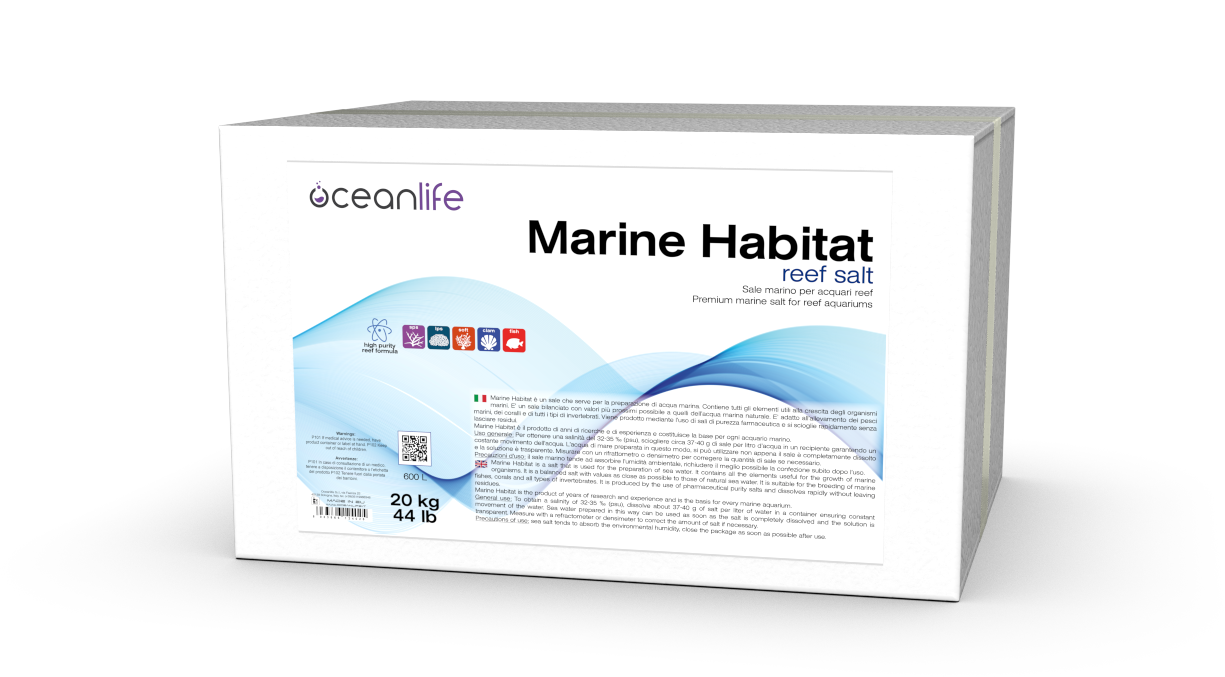How to prepare water with Marine Habitat
Once you have a perfect reverse osmosis water, you need to bring it to the correct temperature. When it reaches 24 °C, turn on the movement pumps at maximum power and begin to salt the water by adding small amounts of Marine Habitat salt, making it dissolve completely before adding more.
Absolutely not to do is throw all the salt at once or add water to the salt, even worse if with little water movement. This promotes the precipitation of calcium and carbonates, leading to a serious imbalance of chemical parameters. When precipitation occurs, in the most severe cases, a whitish mist is observed in the water that is deposited on the glass and on the pumps.
To check salinity, we recommend the use of a refractometer or better a conductivity meter. Usually these instruments have automatic temperature compensation and are easy to read. The use of a hydrometer is however not recommended since the reading must be corrected based on tables and the temperature of the water.
Stop adding salt when the indication of 35 PSU (‰ or ppt) is reached using a refractometer, 53 mS using a conductivity meter or 1023 g/l using a hydrometer (taking care in this case to calculate the necessary corrections). Using a specific gravity meter (or relative density - usually the scale alongside the salinity scale inside refractometers), the reading should be at 1.026.
Check which tool you are using.
An absolutely not recommended practice is to prepare the water by weighing only the salt, without taking measurements on the obtained salinity.
leanr more









